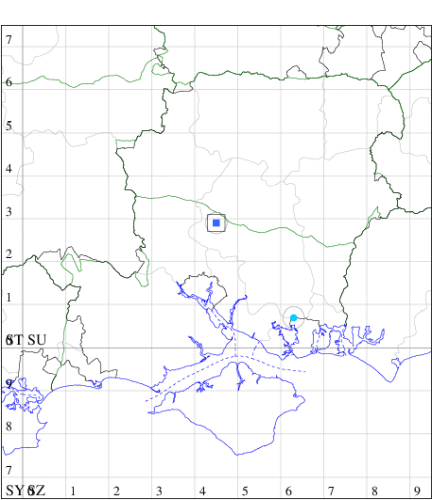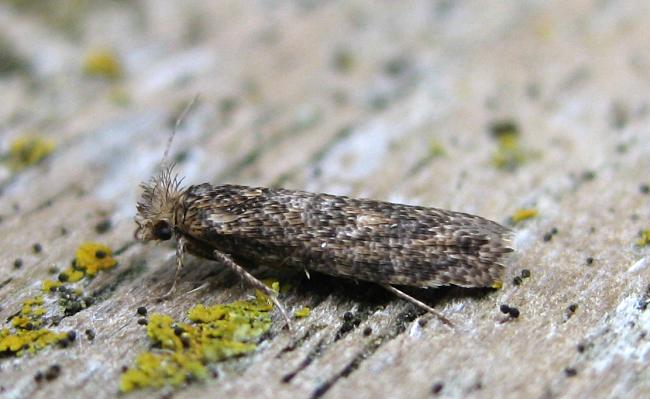Cereal Stem Moth
Ochsenheimeria vacculella
Checklist Number17.016 [B&F: 0253]
Verification
Record will normally be accepted but photo evidence may be required - check with CMR if not sure of identity
Classification
| Family: | Ypsolophidae |
| Subfamily: | Ochsenheimeriinae |
| Genus: | Ochsenheimeria |
| Species: | vacculella |
| Authority: | Fischer von Röslerstamm, 1842 |
Nationally scarce (Na) in open woodland, grassland and around arable fields, sometimes exploiting outhouses, in which it may aestivate, in parts of England. In Hampshire the only good records are of one at Southwick in 1987 and of several moths together under the bark of a larch on Teg Down in 1990. Not recorded from the Isle of Wight to date. Wingspan male 11-12 mm, female 12-14 mm. Larva mines stems and leaves of Rye, Perennial Rye-grass, Sheep's-fescue and various grasses, over-wintering as an egg.


The abundance in each month is indicated as follows:
 No records
No records Very occasional
Very occasional Irregular
Irregular Uncommon
Uncommon Off-peak, but not unusual
Off-peak, but not unusual Off-peak, but not unusual
Off-peak, but not unusual Main flight time
Main flight time| J | F | M | A | M | J | J | A | S | O | N | D | |
|---|---|---|---|---|---|---|---|---|---|---|---|---|
| Adult |  |  |  |  |  |  |  |  |  |  |  |  |
| Larval |  |  |  |  |  |  |  |  |  |  |  |  |
Records by week (adult)
Records by week (larval)
VC11 South Hampshire
| Site | Date | Quantity | Recorder | Stage |
|---|---|---|---|---|
| Southwick (SU60) | 19/07/1987 | one | John R Langmaid | Adult |
| Teg Down, Winchester (SU42) | 02/09/1990 | eight | J R Langmaid, R J B Hoare | Adult |

